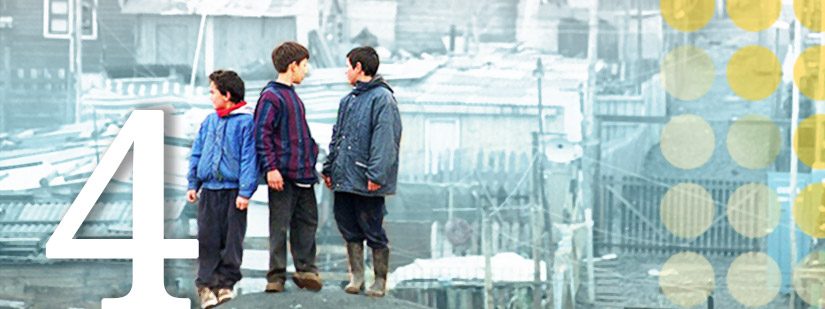Look at the next few figures to see what happens to the wealth exchange model that we have just described. A wealth of 1.0 on a plot corresponds to $100,000. The agents are labelled from 1 to 100 on the horizontal axis.
Notice that as time goes on fewer and fewer agents have any significant wealth. After 100 transactions agent 79 has the most wealth, but after 10,000 transactions agent 32 has the most wealth. Then at 100,000 transactions agent 93 has taken over the top spot. After a million transactions it looks like agent 89 has taken over the top spot and now has over 50% of the entire wealth of the whole economy. If we ran the simulation long enough, eventually one agent will obtain essentially all the wealth.
Why does one agent obtain almost all of the wealth? The reason is that a percentage of the smaller wealth of the two agents is always transferred. Hence, richer agents lose a smaller percentage of their wealth compared to poorer agents.
As most of the agents become poorer, richer agents rarely transfer wealth to other rich agents and hence rarely lose a significant percentage of their wealth. If we ran the model again we would again find that one agent ultimately receives almost all of the wealth, while a small number of agents typically jockey for the top spot until that agent wins and gets almost everything.
The model we have discussed is too simple to represent the actual trades that people, corporations, and other entities undergo every day. Economies are complex systems that have many influences which are difficult to include in a simple model. For example, you might object to using the same percentage of the poorer agent for every exchange. However, if we were to change the value of this percentage, we would still obtain the same result that almost all the wealth goes to one agent. Changing the value of the exchange percentage impacts only how long it will take for almost all the wealth to finally go to one agent. Changing the initial wealth and how it is distributed initially might bias which agent finally obtains almost all the wealth, but will not change the behaviour of the model. That is, almost all of the wealth will go to one or a few agents in a short time, but eventually one agent obtains almost all the wealth. If we obtain the same behaviour for different values of the initial wealth, number of agents, and the percentage of the poorer agents wealth to be transferred, we can have some confidence that the behaviour of this simple model is able to capture the qualitative behaviour of real economies.
More important is the insight that random exchanges such as those in the model drive the economy toward the accumulation of wealth. Thus, wealth accumulation is not an anomaly, but the rule.






